Description
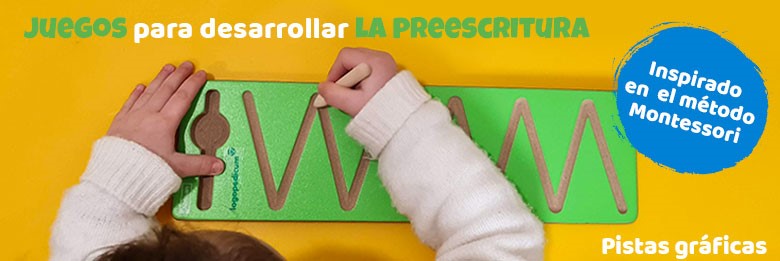
Aprender es modificar o adquirir nuevas habilidades, destrezas, conocimientos, conductas y valores mediante la experimentación, el estudio, la observación, el razonamiento o la instrucción. Múltiples y variados juegos disponibles hoy en día, desde los más clásicos hasta los más innovadores, pueden ser grandes herramientas para construir una variedad de aprendizajes: lectoescritura, matemáticas, razonamiento y resolución de problemas, etc. aportando motivación e interés a los jugadores. Más allá de la estimulación de las inteligencias múltiples, fomentaremos la autoestima, incentivaremos la cooperación y el trabajo en equipo y mejoraremos el comportamiento y la actitud, entre otros muchos aspectos.
 Auditory Memory Caterpillar
29,90 € (VAT not included)
Auditory Memory Caterpillar
29,90 € (VAT not included)
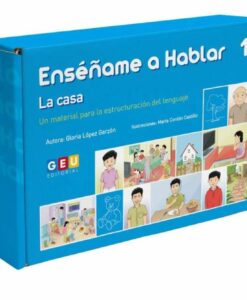 Enseñame a hablar
55,55 € (VAT not included)
Enseñame a hablar
55,55 € (VAT not included)
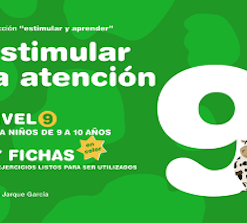 Stimulate attention
15,90 € (VAT not included)
Stimulate attention
15,90 € (VAT not included)
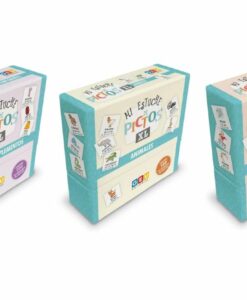 My pictos XL case
16,50 € (VAT not included)
My pictos XL case
16,50 € (VAT not included)
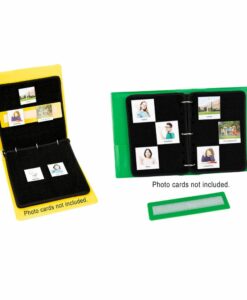 Communication notebook
41,20 € – 49,20 € (VAT not included)
Communication notebook
41,20 € – 49,20 € (VAT not included)
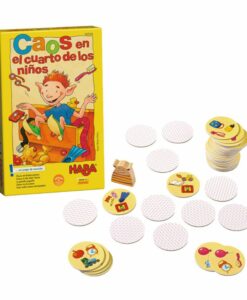 Eagle's eye view - Chaos in the children's room
11,90 € (VAT not included)
Eagle's eye view - Chaos in the children's room
11,90 € (VAT not included)
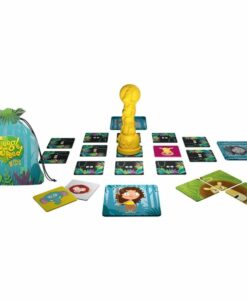 Jungle Speed kids
18,90 € (VAT not included)
Jungle Speed kids
18,90 € (VAT not included)
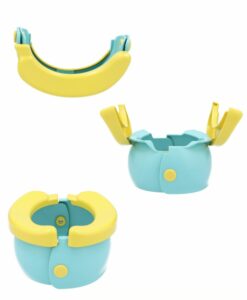
5,60 € (VAT not included)
This fork and spoon set is simple, elegant and easy for a child to use.
| Brand |
Mushie |
|---|
In stock
somdn_product_page
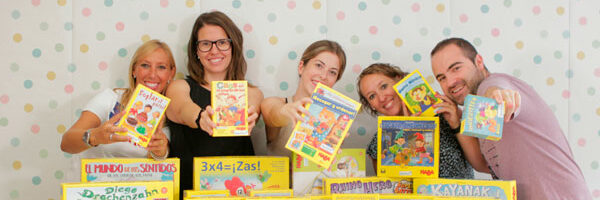
Departamento de asesoramiento
asesoramiento@logopedicum.com
Departamento de formación
formacion@logopedicum.com
No account yet?
Create an Account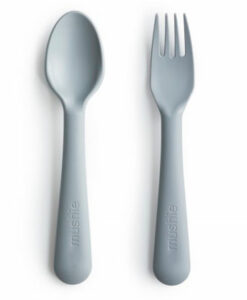
Fun and dynamic material to work on oral and written language. The set consists of 52 illustrated cards (26 pairs) representing situations of everyday life. Specifically, each pair shows the "before" situation (e.g. children with buckets of sand on the beach) and the "after" situation (e.g. children sitting next to a sand castle).
The pack contains a metal box for storage and transport of the cards.
https://logopedicum.com/wp-content/uploads/2015/06/antes-despues-247x300.jpg 22.39 instock Communication and pragmaticsLANGUAGELEARNINGSNarrative discourseSemantics 0 0.00 0 https://logopedicum.com/wp-content/uploads/2015/06/antes-despues-247x300.jpg 2195021729219572163821692 22.39 18.50 0.00 0.00 2015-06-15T14:12:29+02:00The Sock Monster is back in the closet! Who will be able to find the pairs of socks in such a mess? Make children have fun searching quickly to train their visual skills: recognition, identification, location, etc.
Set contains: 1 monster, 48 socks (24 pairs), 13 clothespins and game instructions.
Este Tratado expone, a lo largo de 38 capítulos y más de 650 páginas, todos los planos de la evaluación de las patologías en la Motricidad Orofacial. Se repasan desde las alteraciones funcionales, a las de la masticación, la deglución, las disfagias, las disartrias, las dispraxias, las fisuras labiopalatinas, los traumatismos faciales, el frenillo, las cirugías ortognáticas, etc. por lo que es un libro imprescindible para Logopedas, profesores de Audición y Lenguaje, Dentistas, Fonoaudiòlogos, etc.
https://logopedicum.com/wp-content/uploads/2014/03/tratado-de-motricidad-orofacial-247x300.jpg 33.54 instock BooksOrofacial myology 0 0.00 0 https://logopedicum.com/wp-content/uploads/2014/03/tratado-de-motricidad-orofacial-247x300.jpg 2200721729216382101121980 33.54 32.25 0.00 0.00 2014-03-06T20:50:21+01:00En este libro, dirigido a los profesionales de la intervención en el lenguaje escrito, se expone una revisión actualizada del concepto de disgrafía como el trastorno en uno o varios de los procesos de la escritura, la comprensión, la sintaxis, el léxico y el grafismo, así como su evaluación y diagnóstico diferencial para establecer programas de tratamiento ajustados a la naturaleza del trastorno.
https://logopedicum.com/wp-content/uploads/2015/03/Guia-de-intervencion-logopedica-en-la-disgrafia-247x300.jpg 23.82 instock Reading and writingBooks 0 0.00 0 https://logopedicum.com/wp-content/uploads/2015/03/Guia-de-intervencion-logopedica-en-la-disgrafia-247x300.jpg 2170121093214252100821575 23.82 22.90 0.00 0.00 2015-03-11T11:51:24+01:00¿Qué hacemos cuando nuestro hijo no cumple las normas, es irresponsable o se comporta mal?
La disciplina también es necesaria para educar a los hijos en esta edad. Estas técnicas se utilizan cuando las técnicas positivas no son suficientes; cuando queremos enseñarle que las conductas inadecuadas tienen consecuencias negativas y para eliminar los comportamientos negativos, potenciando las conductas adecuadas.
El libro propone una serie de técnicas de disciplina, explica cómo se aplican, para qué situaciones son válidas y cuáles son los errores frecuentes que tendríamos que evitar. Estas técnicas sirven para actuar cuando el niños incumple las normas o las técnicas para educar no son suficientes, especialmente en problemas de comportamiento.
Los contenidos del libro se completan con un bloque práctico para aclarar dudas habituales sobre los mismos y proponer actividades para ponerlas en práctica.
https://logopedicum.com/wp-content/uploads/2016/11/tecnicas-basicas-de-disciplina-web-247x300.png 16.54 instock OthersBooks 0 0.00 0 https://logopedicum.com/wp-content/uploads/2016/11/tecnicas-basicas-de-disciplina-web-247x300.png 2195021980217742101122030 16.54 15.90 0.00 0.00 2016-11-07T16:39:33+01:00Living with a child with ADHD requires a lot of patience. This book by Mar Gallego guides us on how to deal with this situation with a better chance of success. But not only if you have children with ADHD, but with all sons and daughters. It is a book that starts from the needs of the children to base the education.
Strengthens the relationship between school and family, since educational success depends to a great extent on this. It addresses conflicts between siblings, as this is a recurring theme in family relationships. And it lays the foundations for establishing positive relationships, among other topics of interest presented in this work.
Text in Spanish. https://logopedicum.com/wp-content/uploads/2016/02/Educacion-emocional-con-y-sin-TDAH-247x300.jpg 16.54 instock ADHDADHDBooksOthersSPECIAL EDUCATIONAL NEEDS 0 0.00 0 https://logopedicum.com/wp-content/uploads/2016/02/Educacion-emocional-con-y-sin-TDAH-247x300.jpg 2203021980216712197622007 16.54 15.90 0.00 0.00 2016-02-15T14:15:36+01:00El estudio del habla es altamente complejo, por lo que abordarlo en un solo volumen resultaría muy difícil, por ello, en el presente texto se estudian algunos de los aspectos que lo conforman, tales como, la articulación, fluidez, voz y prosodia, entre otros.
En esta perspectiva, el eje central de los diversos capítulos ha sido asumir que el habla, es el resultado de la compleja relación de procesos neurolingüísticos, neurofisiológicos, neurosensoriales, neuromusculares y la actividad psíquica (integrada dentro de los procesos de la percepción, imaginación, el pensamiento y la actuación a nivel epiconsciente), que permite a una persona concreta, utilizar en forma particular los códigos y reglas propios de su lengua, de acuerdo a sus experiencias socioculturales, estados afectivos, cognitivos, conativos y volitivos; procesos que se evidencian durante su emisión, a través de las características de la voz, fluidez, prosodia y articulación.
https://logopedicum.com/wp-content/uploads/2016/04/Trastornos-del-habla.jpg 24.28 instock Speech and voiceBooks 0 0.00 0 https://logopedicum.com/wp-content/uploads/2016/04/Trastornos-del-habla.jpg 2109321425220302126021774 24.28 23.35 0.00 0.00 2016-04-06T15:14:06+02:00Stimulate and learn + is a program to simultaneously stimulate different cognitive functions: attention, memory and processing speed, mainly.
It incorporates some task models that appear in the specific workbooks for these functions and also includes new activities.
The collection is presented in the form of different books of cards of different levels of difficulty, adapting to the needs of the students.
Level 3: 60 cards for children from 6 to 10 years of age
If you wish to purchase the lower and higher levels, please send an e-mail to info@logopedicum.com to request them.
Text in Spanish. https://logopedicum.com/wp-content/uploads/2016/11/estimular-y-aprender-web-247x223.png 16.54 instock BooksExecutive functionsLEARNINGSOthersReading and writing 0 0.00 0 https://logopedicum.com/wp-content/uploads/2016/11/estimular-y-aprender-web-247x223.png 2157521976210932169221638 16.54 15.90 0.00 0.00 2016-11-09T20:27:37+01:00Whether with drawings of candies, hats, lettuce, ... this wooden game allows the child to learn to relate the concept of quantity with numerical graphics. Specifically, it challenges the little ones to order the drawings in relation to the corresponding numbers, and can also be used as a memory game (number-quantity). Its drawings are attractive and the pressed wood pieces are resistant and easy to hold. A practical box allows the game to be easily transported from one place to another. This fun game also stimulates concentration, although a bit of luck is also needed to win!
https://logopedicum.com/wp-content/uploads/2015/05/Juego-memoria-Numeros-247x300.jpg 11.98 instock Calculation and mathematical languageExecutive functionsLEARNINGSWood 0 0.00 0 https://logopedicum.com/wp-content/uploads/2015/05/Juego-memoria-Numeros-247x300.jpg 2171921008215752172921723 11.98 9.90 0.00 0.00 2015-05-21T19:26:12+02:00High quality beech wood double-sided boards on which are represented the different numbers from 1 to 10, on one side, and the corresponding quantity in the form of colored circles on the other. Very interesting tool to facilitate the learning of the concept - numerical quantity, as well as to help visualize mathematical operations.
The set contains 36 pieces and a wooden tray for storage and transport.
https://logopedicum.com/wp-content/uploads/2015/06/juego-madera-calculo-247x300.jpg 19.24 instock Calculation and mathematical languageLEARNINGSWood 0 0.00 0 https://logopedicum.com/wp-content/uploads/2015/06/juego-madera-calculo-247x300.jpg 2195721093219762169221395 19.24 15.90 0.00 0.00 2015-06-29T11:48:07+02:00Set of numbers from 0 to 9, large, on a rigid plastic base to be worked by touch. The silhouettes of the numbers are made with a rough material to provide an extra sensory stimulus in the development of numeration and calculation.
The individual plates are 11.9 x 15.9 cm in size.
https://logopedicum.com/wp-content/uploads/2017/06/numeros-montessori-247x223.jpeg 18.03 instock LEARNINGSCalculation and mathematical languageMotor skillsMULTISENSORY STIMULATIONThe 5 sensesSPECIAL EDUCATIONAL NEEDSVisual Impairment 0 0.00 0 https://logopedicum.com/wp-content/uploads/2017/06/numeros-montessori-247x223.jpeg 2172921011220302139521638 18.03 14.90 0.00 0.00 2017-06-21T17:27:52+02:00A very large child doll, with a colorful and friendly appearance , makes a great friend to develop fine motor skills and learn to dress and undress in a playful way. The garments he wears are equipped with several fastening systems that help him learn everyday gestures (dressing, buttoning, tying, etc.): snap, Velcro®, button, lace, zipper, 3 types of belt buckles and suspenders.
Ideal to encourage fine motor skills and to acquire personal autonomy. The variety of elements to fasten/unfasten(laces, buttons, zippers, velcro, ...) favor the manual dexterity of the little ones while helping to improve the habit of dressing and undressing.
Features:
53 cm doll (dressed in 3 different garments: shirt, overalls and jacket), soft, smooth, pleasant and washable at 30 °C.
https://logopedicum.com/wp-content/uploads/2023/01/Actipoupi-abroches-247x300.jpg 58.50 instock 1 – 2 years2 – 3 yearsAGEAreas of DevelopmentAUTONOMY AND ADAPTED RESOURCESBaby toysBABY WORLDBasic daily living activitiesDolls and stuffed toysFine motor skillsFine motor skillsFine motor skillsGAMES AND TOYSLearning CornersLEARNINGSMotor skillsMotor StimulationMy first toysPractical life and routinesTYPE OF TOY 0 0.00 0 https://logopedicum.com/wp-content/uploads/2023/01/Actipoupi-abroches-247x300.jpg 2109321671219802195022007 58.50 48.35 0.00 0.00 2023-01-19T12:07:33+01:00